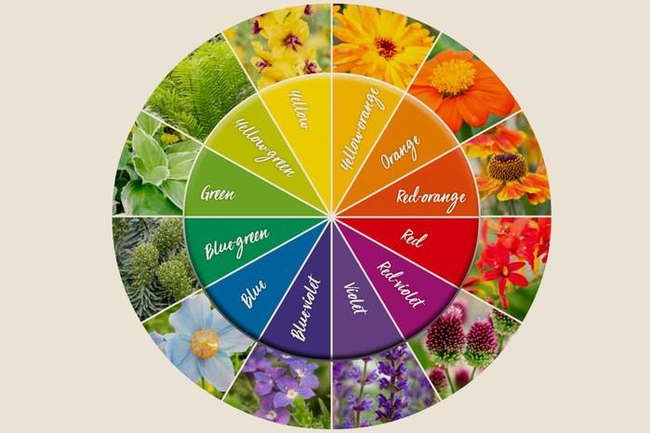Ahhhhh Spring! For us gardeners, we can't wait to start planning our gardens and going out there and getting dirty!
Our perennials are finally emerging from their winter slumber and the trees are showing their tender new spring leaves!
But what about color in this year's garden? Should we do what we always do with the same color combinations or what about branching out this year with something different? You can even create moods for different areas of your garden if you would like such as calming, pastel colors for a space where you want to create a quiet spot and loud, hot colors to enliven a more active area such as around a pool or areas where your children play. Everyone has their own favorites so color is never wrong but keeping in mind the color wheel will reward you with an even more beautiful garden than ever!

The diagram above shows the color wheel. Using the color wheel is the easiest way to illustrate the concepts of color in your garden.
One easy way to combine colors is to use analogous or harmonious colors, which are those that are next to each other on the color wheel. These colors tend to blend well and work best in threes. Usually, one of these colors is dominant with the others taking a supporting role. Both hot and cool colors can create pleasing effects, just keep tones in the right spectrum and the results will reward you time and time again.
Another way to go would be to use complementary colors, meaning colors that sit directly opposite each other on the color wheel. For example, purple and yellow or orange and blue. These colors would be brilliant and happy, and you can add some foliage here and there to add a little break to your garden scheme.
What about monochromatic coloring in your garden? This technique involves using several tints and shades of the same color to provide a simple, calming, and stunning design.
Using warm colors together which would be types of red, orange, and yellow look great together as do using cool colors together which would be shades of green, blue and purple.
You can integrate as many color schemes into your garden as you like, but it will benefit the look more if there are some consistent colors or patterns to bring it all together. For instance, you can choose one of your favorite colors that you want to be your main thrust across your entire garden, and you would make that your main focal point in each area throughout the design to provide some consistency. For example, using red as your main thrust, one area of the garden could have red paired with other warm colors, another it's paired with harmonious colors on the color wheel like purple, another using red's complimentary color, green.
We would be remiss if we didn't discuss green a bit more because, let's face it, it is typically everywhere in our garden! But using it wisely is key. The range of greens is endless and can be fun to play with. For instance, we have dark holly greens which are great paired with purples and can make that section of your garden look very refined. But if you're looking to create a more vibrant garden bed, bright lime greens such as euphorbias will do the trick. Green spaces are like a palette cleanser for your eyes as it makes the spaces calmer and more serene. You can soften fences, houses, sheds and walls with evergreen shrubs and evergreen climbers that give you a sense of wonderful darkness and if you want to add color and contrast alongside them you certainly can.
With all this in mind, plant what you love, there are no hard and fast rules, only suggestions and ideas! You are the master of your garden!